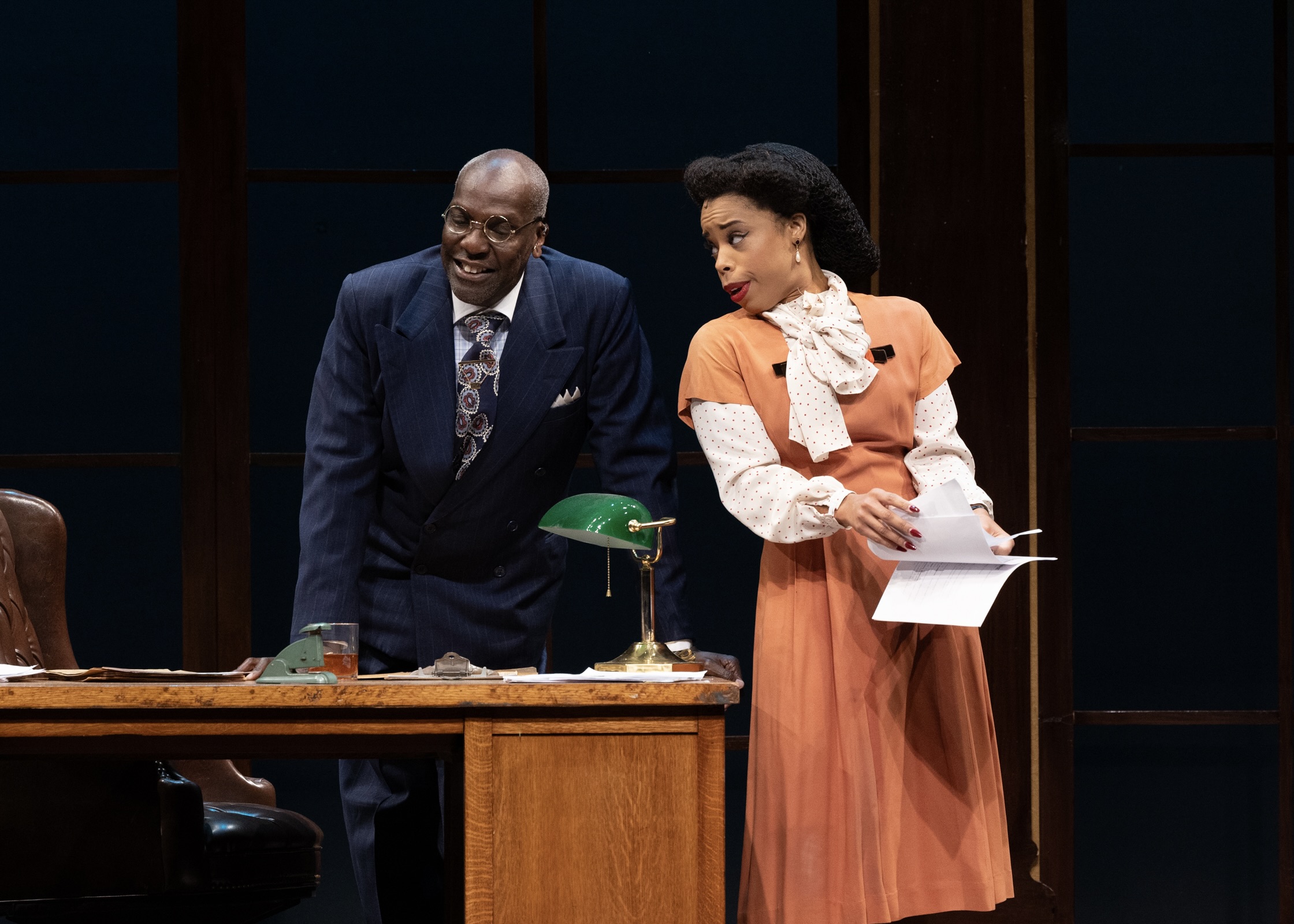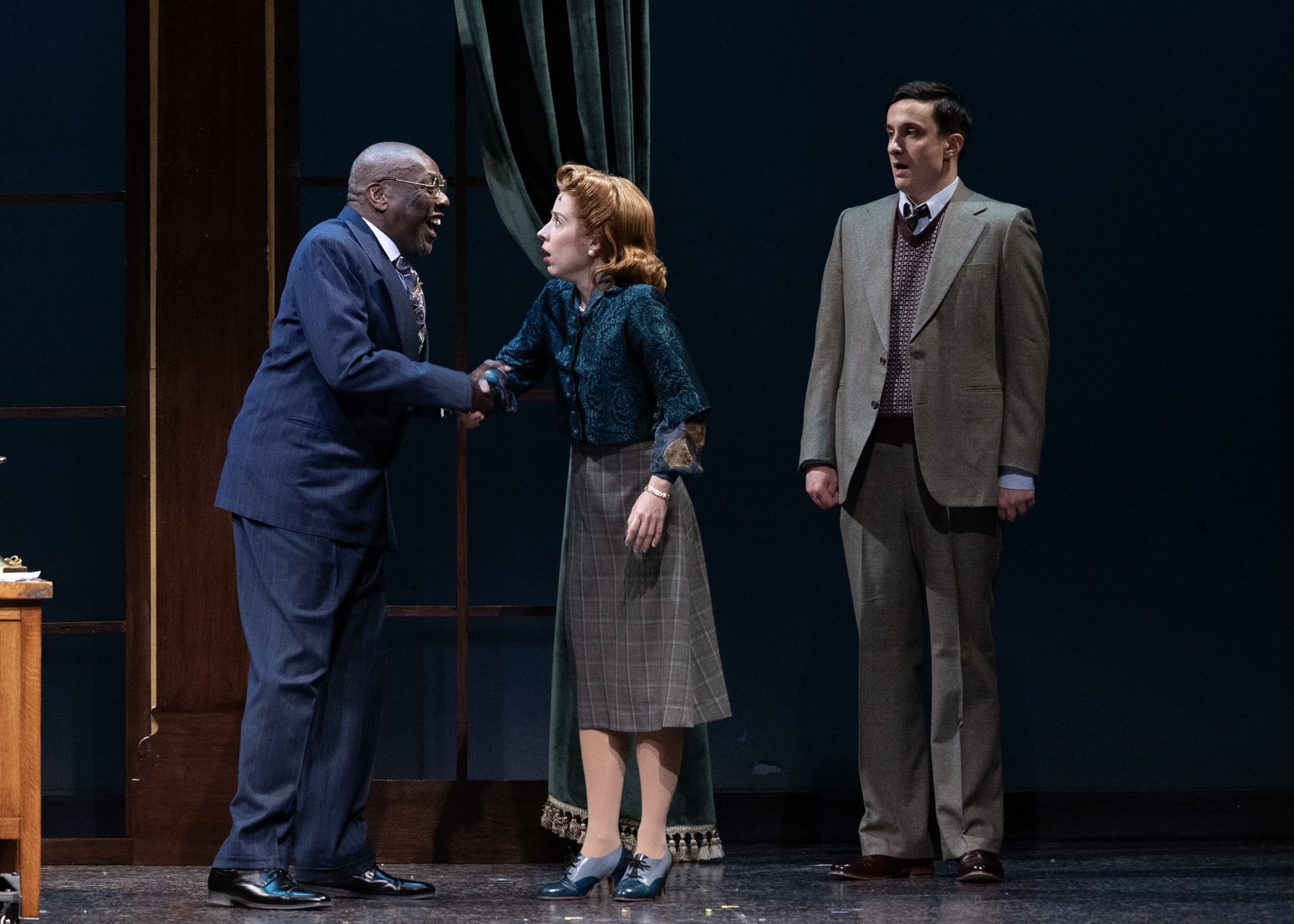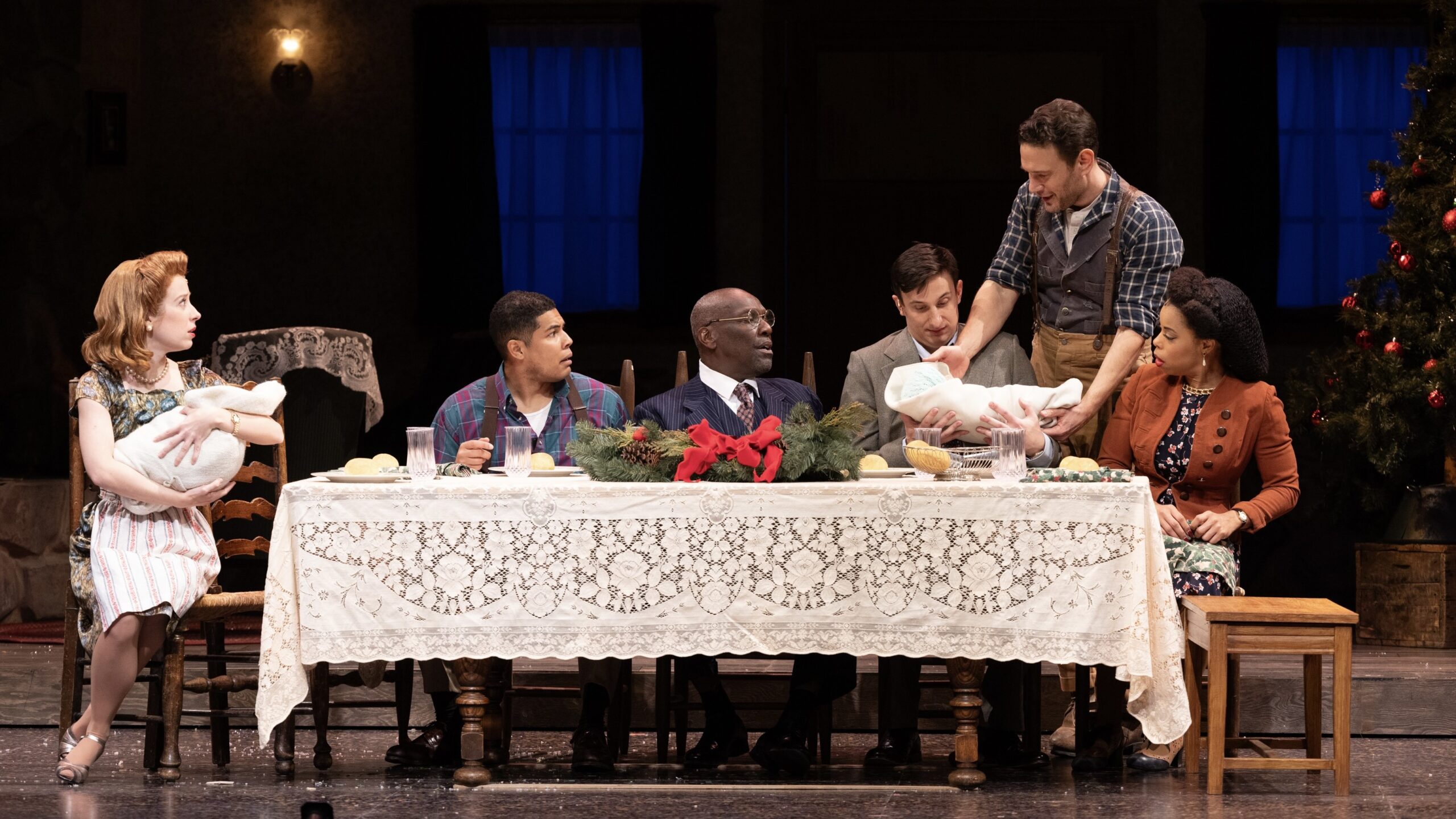SALT LAKE CITY — Christmas in Connecticut (book by Patrick Pacheco and Erik Forrest Jackson, music by Jason Howland, and lyrics by Amanda Yesnowitz) is a stage adaptation of a holiday movie. While it is a play, but there came a point where it felt like I was watching a film on stage. This realization came about during the ensemble number “Capital Idea,” when director and choreographer Karen Azenberg had the cast lined up and bending outward as they sang. The staging felt very much like a film dance routine.

In fact, outside of Robert Aguilar’s lighting design (almost exclusively single spot lights and subtle changes in lighting) Christmas in Connecticut brought back memories of 1990s sitcoms. The humor should be reminiscent to anyone who grew up during that time; in fact, there is a moment in the play where I didn’t take notes because I was just basically trying to write down all the dialogue that I liked so much. There’s a moment where Liz (played by Alyse Alan Louis) is leaning over a crying baby, and Jefferson (played by Christian Magby) suggests that rocking would help, which prompts Liz to begin rocking herself. When Liz initially meets Dudley (played by RJ Vaillancourt), he says, “You’re a real New York writer,” to which Liz replies, “How do you know?” Dudley responds, “You’re broke.”
The musical is full of these moments between characters, which gives it a more modern feel than I expected from a play based on a 1945 film. At one point, Liz even says she tries to stay “in her lane” (parlance from the 21st century), which was jarring to hear. Because of the dialogue and style of comedy, Christmas in Connecticut at no point feels like a period piece. This makes the play adrift and a bit confusing.

The play opens with Liz singing about how she wants to write about women making their own money, and she pokes fun at magazines that are focused on female domesticity. However, historically, World War II was what brought white women out of the home and into the workforce. The play acknowledges this in a roundabout way, depicting female factory workers who drop off their babies to be cared for by Victor (played by Eric William Morris). This causes Liz to have a small change in perspective but only at the end of the play. I also struggled with the core politics of the play: Victor is a die hard socialist whose entire being is devoted to complaining about the various machinations of capitalism. (He is first introduced trying to unionize Santa workers.) Victor and Liz bond over her desire for female empowerment, which can often clash with 1940s working-class politics, but is depicted as being part of the same ideology. However, throughout the play, Liz is shown as being in opposition to Victor, his beliefs, and the fervor in which he holds them. She criticizes Victor as having no sense of humor and defends her decision to make a lot of money as a writer. Liz is only sympathetic because she feels bad about her life getting out of control, but in the end she still values independence and self-sufficiency while quietly admitting that some women may prefer something else. It is not much of a character arc, and the script has little to say to a 21st century audience.
Despite my dissatisfaction with the script, one major highlight of the production was the set (designed by Lex Liang). The latter half of the play, when everyone arrives at the farm, felt in stark contrast to the earlier parts of the play where the stage (at one point) features Liz’s writing table, Mr. Yardley’s (played by Gerry McIntyre) desk in the center and a dinner table to the right. Even though this set-up to represent multiple locations is not uncommon on stage, it still felt busier compared to everyone being in the same place together later on. Another highlight was Gladys Higgenbottom (played by Tiffany Denise Hobbs), who is Mr. Yardley’s secretary and loves mystery novels from the Nancy Drew series. Not only was Hobbs’s singing impeccable, I got the distinct impression that I could watch a cozy mystery musical just about her solving local crimes.

To the show’s credit, the adaptation added Gladys’s character (who is not in the original 1945 film), and I applaud Azenberg for the race-blind casting. In this production, three principal characters are played by Black actors: Gladys, Mr. Yardley (played by Gerry McIntyre), and Jefferson. The play makes numerous changes to both the cast and story, but this one feels the most relevant, particularly when contrasted against the script itself.
Christmas in Connecticut at Pioneer Theatre Company is certainly a fun, modern take on a mid-century classic film. But it falls short if you think too hard about it.
[box]The Pioneer Theatre Company production of Christmas in Connecticut plays Mondays through Thursdays at 7 PM, Fridays at 7:30 PM, and Saturdays at 2 PM and 7:30 PM through December 16 at the Simmons Pioneer Memorial Theatre (300 South 1400 East, Salt Lake City). Tickets are $27.50-84. For more information, visit pioneertheatre.org.[/box]

